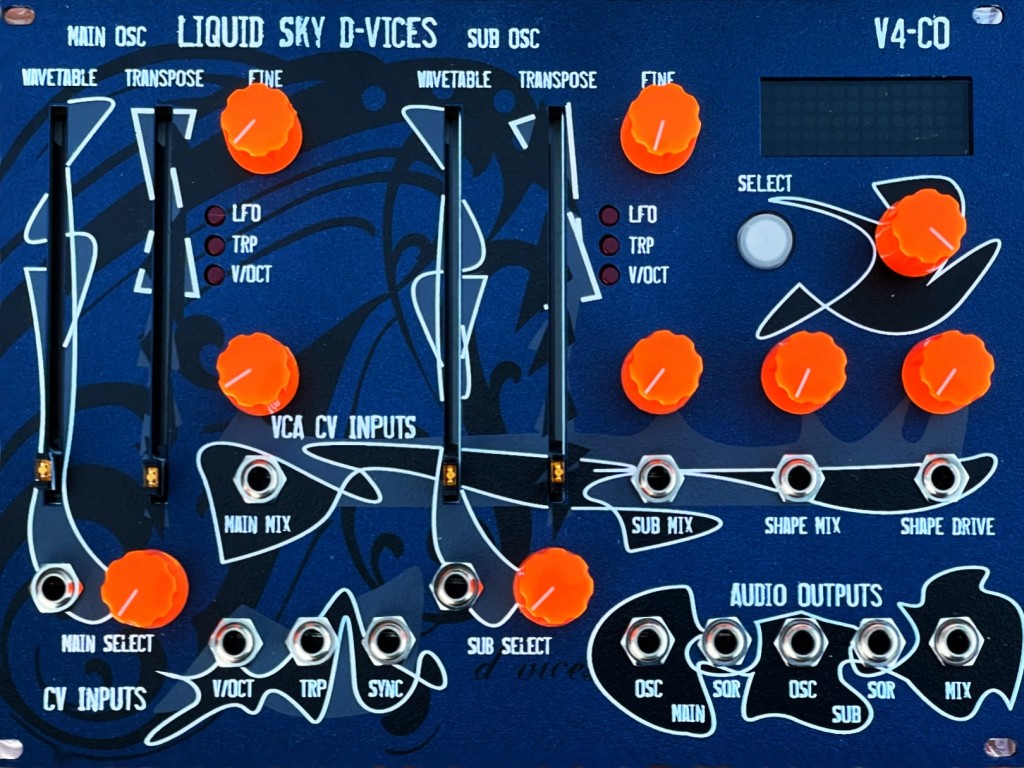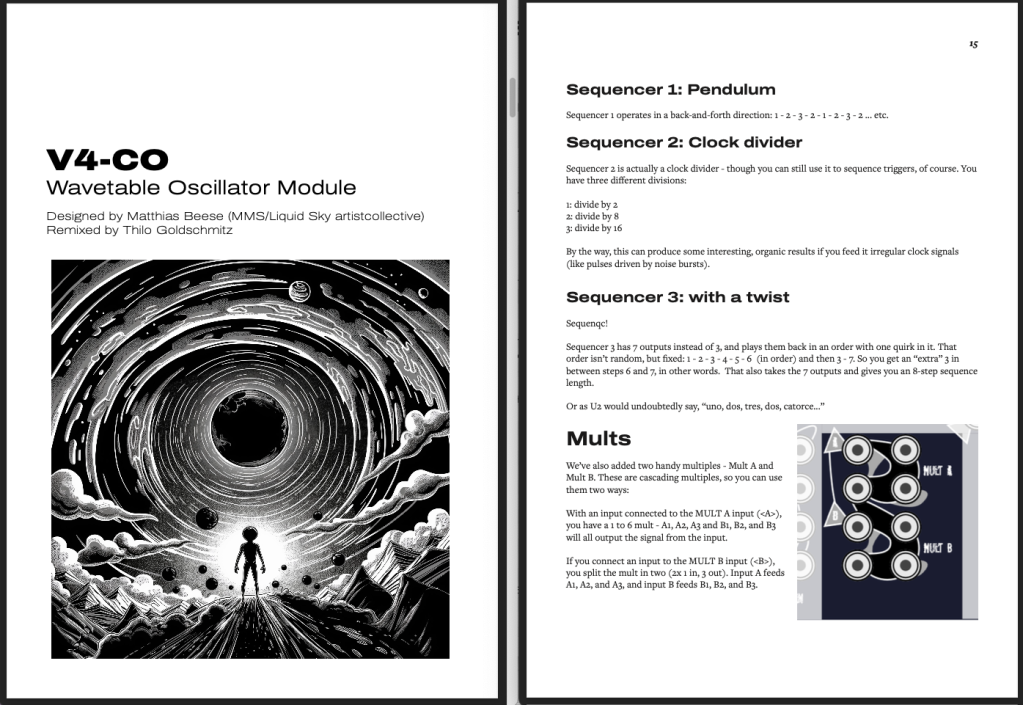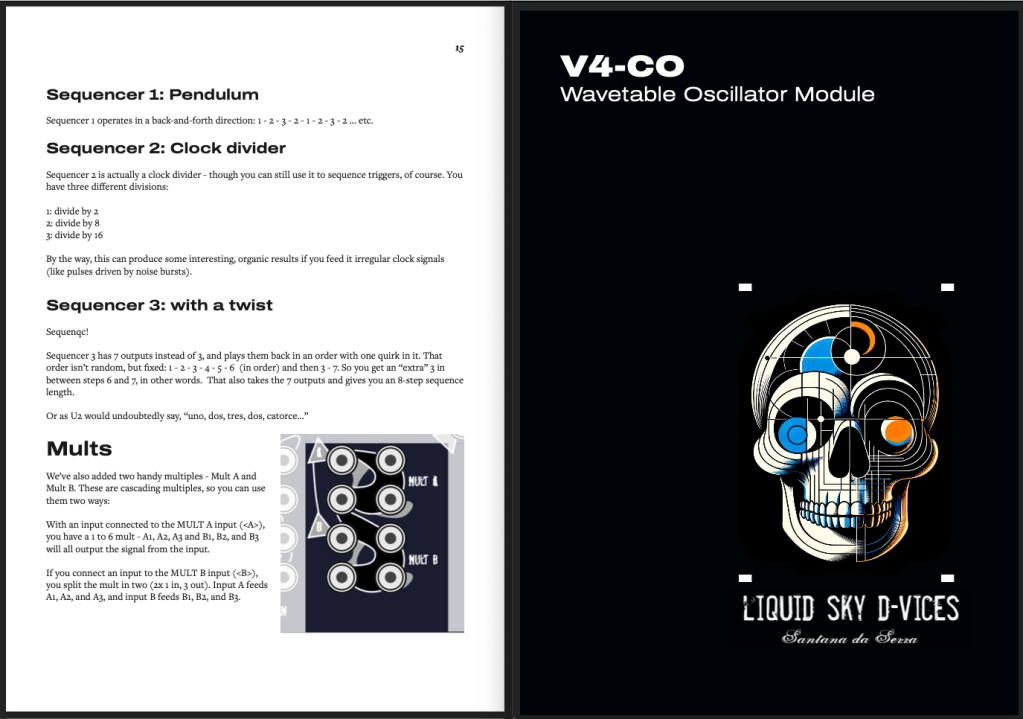Liquid Sky’s V4-CO and GLITHc combine into a wavetable sound design laboratory for Eurorack. The V4-CO is already multiple modules in one – and then you can hack and glitch it at a bit-by-bit level with all the goodies on the GLITHc. It’s so unique that people may not grok it right away. So let’s grok.
I’ve written about Liquid Sky modules before—see below for more. But we’re having a very Liquid Sky summer, as we’ve got new videos. Plus, I’ve written and updated extended manuals for both modules.
First, there’s now an option with mouth-watering orange knobs:

The modules are available from the Liquid Sky shop and your favorite resellers.
I’ve also had the chance to listen to impressions, and once people get these modules, they seem to love them completely. But they’re different enough that they merit some added explanation. First, the oscillator and sub-oscillator play true 8-bit waveforms – run through dual 8-bit DACs. They’re single-cycle, 8-bit wavetables. You do not have a longer wavetable and a position parameter, as you find on some wavetable synths.
But you do have full CV control – and GLITHc control – over the wavetable select. That lets you live-modulate the wavetable and change the output waveform that way. And the GLITHc gives you additional control by letting you hack the wavetable itself, bit by bit, patching directly into each bit. You can also cross-modulate between the main and sub oscillators. You can’t do that on a conventional wavetable synth; it’s really like circuit bending the waveform itself. That can be very, very glitchy, but also quite beautiful – especially if you then patch into filter, effects, etc.

8-bit sound and single-cycle wavetables are a big part of wavetable synthesis – and the sound of vintages synths. Think of the Waldorf Microwave, PPG Wave, and even the Ensoniq SQ-1. Modular is also a perfect environment to bring back the combination of digital wavetable sources with all their edge and harmonic richness, combined with analog modulation and filtering. Here, adding the capabilities of GLITHc brings almost circuit bending-style techniques – or you can think of it as providing visceral modulation of the wavetable for more dynamic sound design. It’s not supposed to be a live configuration, but I’ve begun to think of it as one.
Anyway, I’ve put some care into the manuals with walkthroughs and sound design tips – I hope you like them, and I’m glad to have more feedback and discussion.

And if you need a review on GLITHc, there’s also this:
Now we’ve gotten more videos in, too. Cinematic Laboratory takes a gorgeous tour through these, including the bitwise operators on GLITHc:
Quincas Moreira does a terrific walkthrough of the full combo, getting especially deep into patching both the V4-CO and the GLITHc. It’s a little hard to hear the modules’ sound, but it’s a perfect tour otherwise – and you can feel the madness.
For a sense of some musical context, Andrea does a wonderful guest stint with BoBeats, and shows in particular how you can shift the sound by modulating the wavetable select in creative ways in GLITHc. This is not the same as just patching in CV, both because the GLITHc has its own sequencer options but also because you can patch directly into the wavetable byte itself, for some bitflip action.
And actually we should take a little side trip into bitflips. Here’s a breakdown in just 60 seconds and – yes, there is a connection to quantum computing. Far. Out. But this is about as fast as I could possibly explain the topic – unless you want to go all the way down the rabbit hole, which you can also do:
More:
Liquid Sky d-vices product site
Liquid Sky d-vices shop (including stuff to wear)
Resellers in Europe, the USA, and worldwide